Despite his parents’ discontent, 24-year-old Agam Gupta shifted to a high-rising society in the Noida region of Delhi NCR. He says he primarily chose a 1BHK rental accommodation in the area because he wanted to escape West Delhi’s crowded landscape. His parents were concerned about him residing alone in an unfamiliar society, without instant access to his friends and relatives. However, Agam was determined to live the life of his dreams. As the movement restrictions, owing to the COVID-19 pandemic, were relaxed – he took the plunge.
“The view I get from my 21st-floor balcony, especially the night view, is second to none. There is peace, no interference from anyone, and it makes me feel independent in a true sense,” he says, sounding satisfied as his ‘dream’ life materialises.
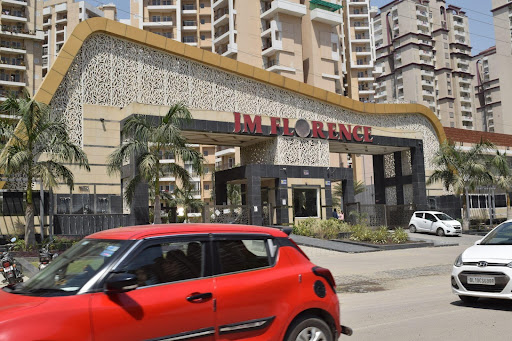
Agam’s story is not an isolated one. While there are several other reasons for an upward trend in housing demands in the Noida and the Greater Noida region, one essential factor is that these regions symbolise the affluent, aspirational lifestyle—beginning with the vertically expanded societies that are transforming the city’s skyline.
Growth in Noida’s Housing Sales
Conventionally an industrial region, NOIDA, an acronym for New Okhla Industrial Development Authority, has been gaining traction from almost all sectors—commercial, real estate, industrial, and more. In addition, its population has significantly ballooned over the past few decades. Based on the 1981 Census, its population was 36,972, which grew to 2,11,534 in 1995, a study by the New Delhi-based School of Planning and Architecture estimates.
Interestingly, the NCR Planning Board had approved a plan for earmarking a population of only 12 lakh each for housing in Noida and Greater Noida by the year 2021. However, concluding to Noida’s Master Plan-2031, Noida’s population in 2010 was already over 10 lakhs. An office bearer at the Noida Authority told the Hindustan Times, “The Noida authority has already developed infrastructure, built housing projects and allotted land to builders to provide habitation for 25 lakh population by 2031.”
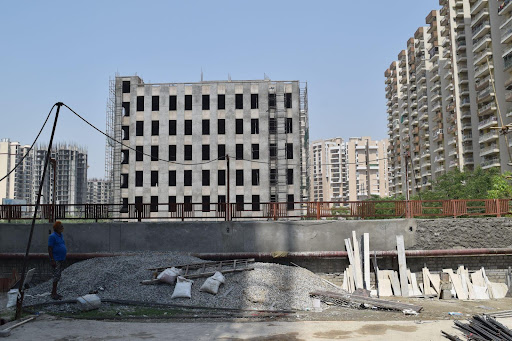
There are various reports that have calculated the population growth trajectory of the region in contemporary times. According to the Magicbricks Propindex Report 2022, a quarterly research publication detailing insights on the country’s housing markets, the housing demand increased by 8.2% in Noida for Quarter 1 (January-March). A similar trend reverberated in the 99acre Insite Report, which said that Delhi NCR registered over 100% growth in sales volume. It highlights Noida, other than Gurgaon, as one of the regions witnessing the highest demand for housing.
There are various key factors facilitating the populous interest in the region. From multinational companies and IT giants setting up their business centres, restoration of buyer’s confidence post-pandemic to massive-scale infrastructural development, and the construction of Yamuna expressway. Planning of Jewar airport (or Noida International airport), the extension of metro corridors, setting up of educational institutions, the establishment of towering buildings and societies, and more.
Increasing Disparity Between the Rich and Poor
While the significant developmental aspects of the Noida and Greater Noida regions have put these cities on the map, it has also parallelly aggravated the inequality and widened the gap between the rich and poor. There is a deep-seated class polarisation based on the social and economic status, resulting in clear demarcation between the city’s population. And so, there are ones who reside in these luxurious apartments who are most often blue-collar workers, and then there are the security guards, janitors, house help, and others, majority of whom live in the slums overshadowed by the sparkle and glitz of these opulence apartments.

The conditions of most slums are not safe and fit for habitation, as is the case for slums across the country. As high-rises continue to be built, many of these slum dwellers lose their houses. For the rehabilitation of slum dwellers in newly constructed flats, the scheme Jhuggi-Jhopri Punarvas Yojna (Slum Rehabilitation Scheme) was launched in 2011. However, according to a NewsClick report, the scheme’s overall achievement remained dismal, as only 30% of the slum dwellers from various sectors of Noida enrolled between 2011-2018. Approximately 11,000 slum houses still exist in the region, yet the scheme was done away with in 2021 without meeting its due targets. Currently, just 10% of the constructed flats are living residences, while the other 90% remain unoccupied.
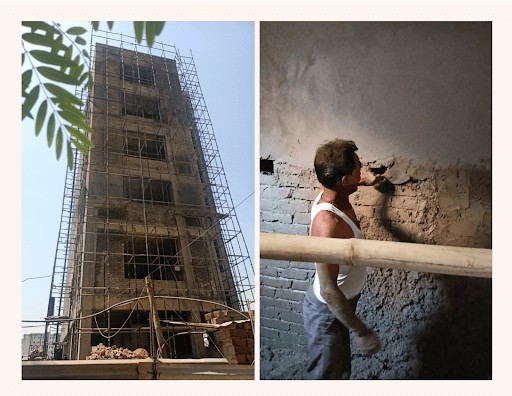
41-year-old Pammi Kumar is a resident of Khajoori Khas village in Delhi who works as a house help in Noida. She is a divorcee, and is single-handedly raising her two kids. When the unprecedented pandemic struck, she was laid off by the company where she worked. In the absence of governmental aid that she earlier got—the subsidised ration, for her, it became difficult to make both ends meet. Soon, she started working as a house help. Although she feels thankful that no one in the Noida society, where she works, reduced her pay during the pandemic, her livelihood has become difficult and challenging—it is nowhere similar to those affluent and well-off people for whom she works.
The Unauthorised Buildings of Noida
In addition to the massive construction spree visible in the Noida, Greater Noida, and Gurugram region, some constructions are unauthorised. As per the Hindustan Times report, in the last two decades, Noida’s 50 villages have become centres of unauthorised residential and commercial towers. The urbanisation and ever-increasing population have paved the way for further development in the area and have also contributed to the construction of illegal and unauthorised buildings. Builders have been successfully providing these unauthorised properties at relatively lower prices, luring many buyers.
One such unauthorised building was the Supertech Twin Towers. The Supreme Court ordered the demolition of Supertech’s twin towers, named Apex and Ceyane respectively, located in Noida. Its construction violated the minimum distance requirement and had been built illegally without taking the consent of the individual flat owners, a requirement under the UP Apartment Act, 2010.
The Noida authority has launched a crackdown on other such illegal and unauthorised buildings. Recently, the authorities have demolished some illegally constructed flats in Assotech Windsor Court, a housing society in Noida’s sector 78.
Waste Management, Illegal Garbage Dumping and Spike in Pollution
Multinational companies and IT giants setting up their centres have led to an overwhelming influx of skilled and unskilled workers in Noida. Exponential population growth in the city is a significant contributor to pollution and illegal waste disposal. In a recent Air Quality Index Survey, Noida ranked 49th among the world’s top 50 most polluted cities.
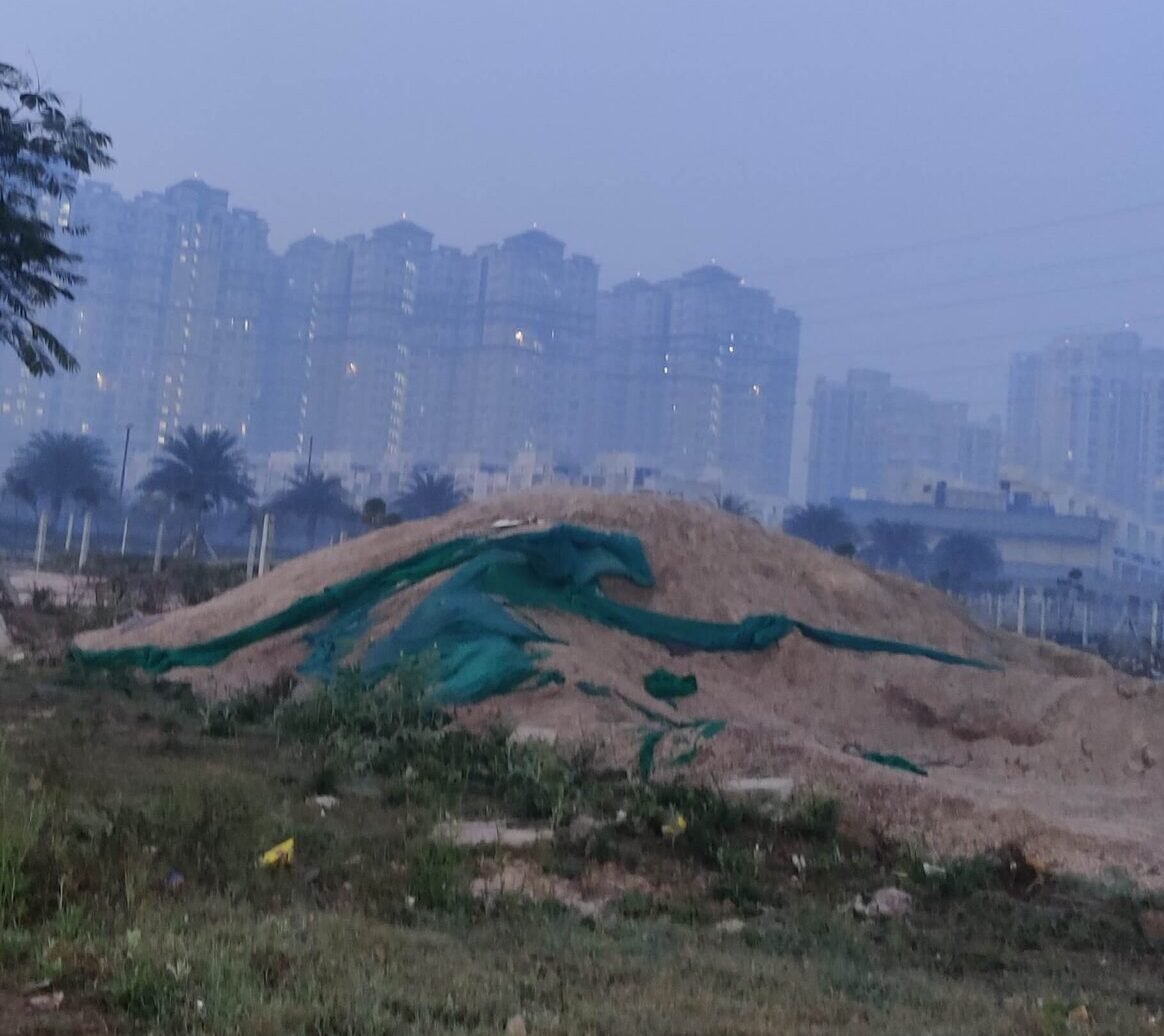
According to the survey conducted by HelpAge India, of 2 Lakh elderly individuals belonging to 70 lower-income neighbourhoods in Noida and Greater Noida, 40 percent of them suffered respiratory problems. Dr Ritu Rana, Mission Head (Healthcare), HelpAge India, told the Hindustan Times, “Respiratory problems have emerged as one of the most significant concerns for senior adults. 5% of elders have been diagnosed with asthma and other respiratory disorders.”
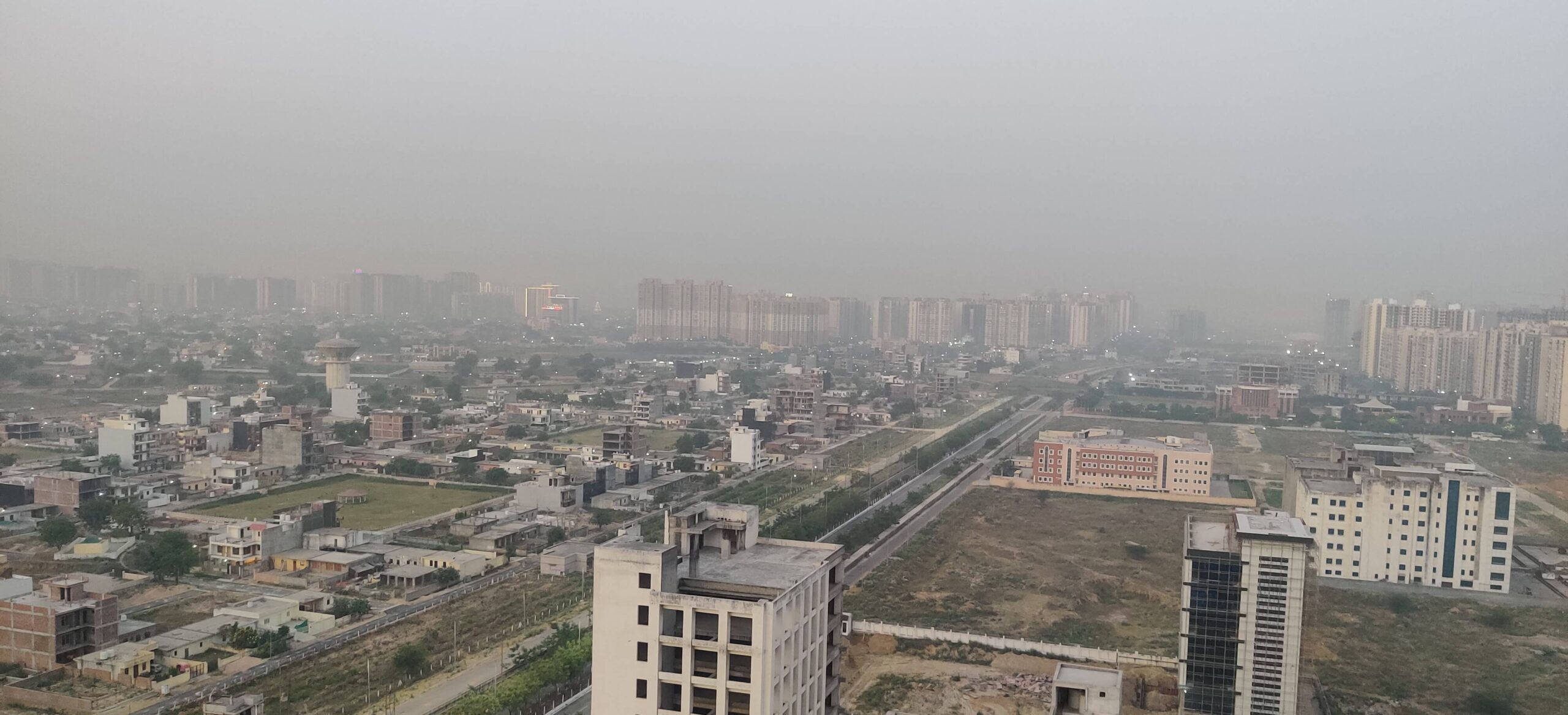
Dr Parashram Patil, an international expert with the United Nations Framework Convention on Climate Change, told The Bastion that desertification was one of the primary reasons for an unusual surge in pollution, increased temperature, and further desertification.
“Aravali hills surround Noida and they stopped the desertification earlier; they acted as a barrier and deflected the desert wind from reaching Delhi but the massive scale construction and development taking place in and around Noida have threatened the ecosystem, and the barrier is now getting destroyed.”
—Dr Parashram Patil
Also Read: The Aravallis are Calling…for Help
Noida generates around 250 tonnes of garbage daily, and waste management has always been an issue. In an interview with The Times of India, the concerned authority CEO said, “The UP State Industrial Development Authority areas do not have a proper garbage maintenance system, sometimes their waste is dumped in Greater Noida, and sometimes Ghaziabad’s garbage is dumped here. We sometimes tracked these violators and fined them, but people just do not follow the rules.”
The Greater Noida Industrial Development Authority has initiated an on-the-spot challan system through the point of sale machine for illegal waste disposal within the city. The government has collaborated with HDFC bank, and fines will be levied on offenders.
Safety Audit of Noida’s High Rise Apartments
The poor construction quality, weak foundations, and neglect of structural safety have resulted in the collapse of numerous buildings in Noida and Gurugram. In a recent case of Gurugram’s Chintel Paradiso, the apartment’s ceiling collapsed, leading to the death of two women. After the incident, the residents and owners in the Noida region also raised their concern, following which the authorities decided to carry out a safety audit of all 700 high-rise housing towers in Noida and 500 in neighbouring Greater Noida.
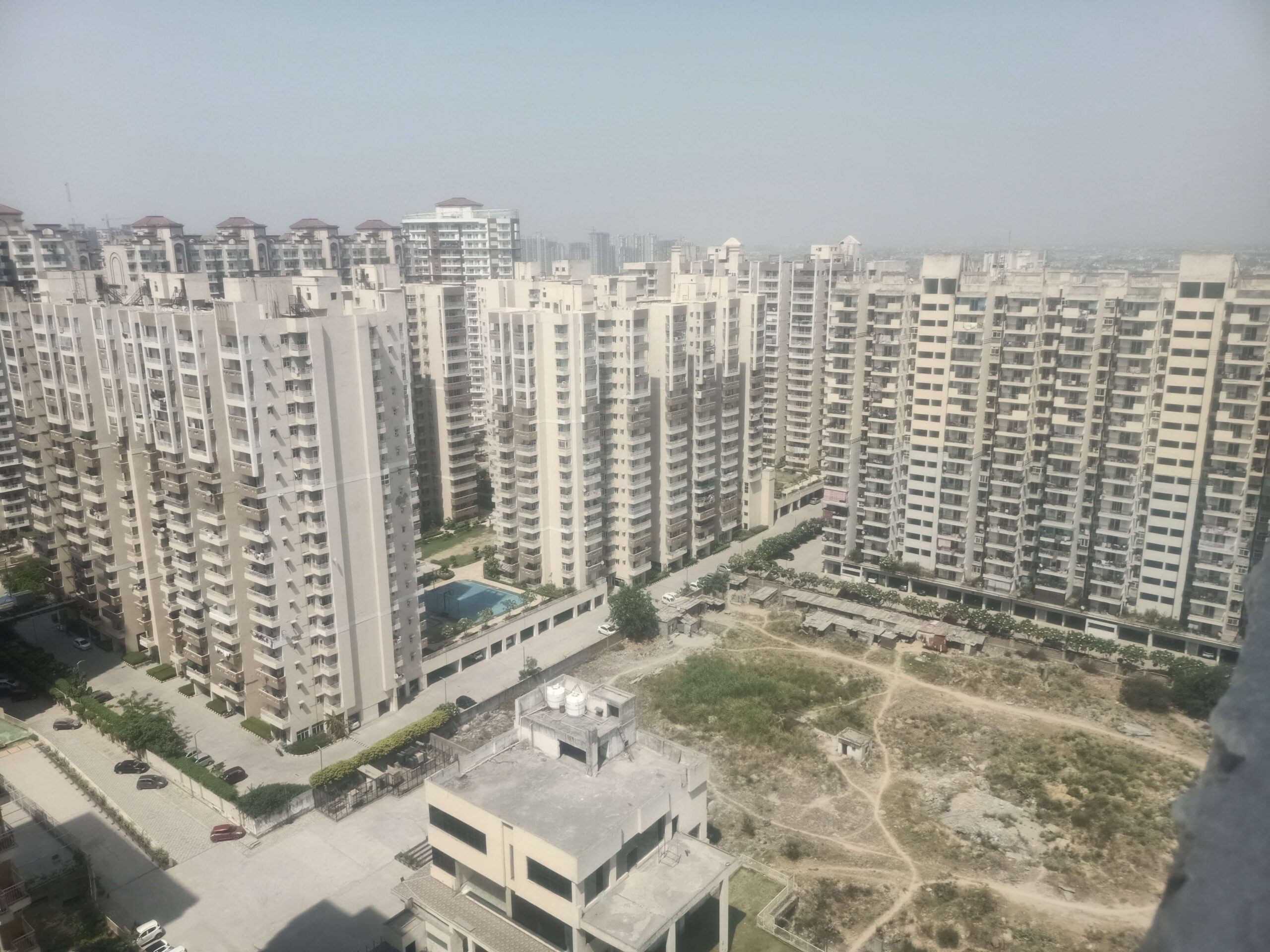
Narendra Bhooshan, CEO, Greater Noida authority told The Hindustan Times, “We have formed a committee to look into the issue of structural safety. We will also make sure that the safety structure certificate is uploaded on our website and buyers or investors can have a look at it.”
The Way Forward
Recently, the Yamuna Expressway Industrial Authority (YEIDA) has proposed Noida Master Plan 2041. It will likely include parts of Gautam Buddh Nagar and Bulandshahr districts covering the envisioned Greenfield Noida Airport. The proposal further lays down the construction of an “ultra-modern city” and a sports zone with Olympics-level facilities. Some of the significant recommendations in the plan include the Central Business District, Aerotropolis, Olympic city, transportation sector, logistic facilities, etc. YEIDA’S Additional CEO Shailendra Bhatia told PTI, “It’s going to be more like a city. Aerocity in Delhi only has hotels and commercial land use, nothing residential. At Aerotropolis, there will be commercial as well as residential facilities. It will be a multi-use hospitality sector.”
Earlier this year writing about the inequalities exposed by the pandemic, human rights and peace worker and writer Harsh Mander, in an opinion piece, for The Indian Express wrote, “The starting point of our vision of a new India is for the state to assume responsibility to provision quality healthcare, education, food, pension, clean water and housing, free or in affordable ways for all citizens.” He also referred to the India Exclusion Report brought out by the Centre for Equity Studies, which says that “to resource all of this would demand a public resolve to expand taxation of the super-rich.” While several policy suggestions exist to address the issues of fast-paced urbanisation, weak implementations and inclusion of all stakeholders remains a challenge.
Delhi’s NCR region is fast evolving. It is important to observe in the years to come how the region balances between development, and other critical factors such as environment, natural resources, and population expansion.
Featured image by Khansa Juned


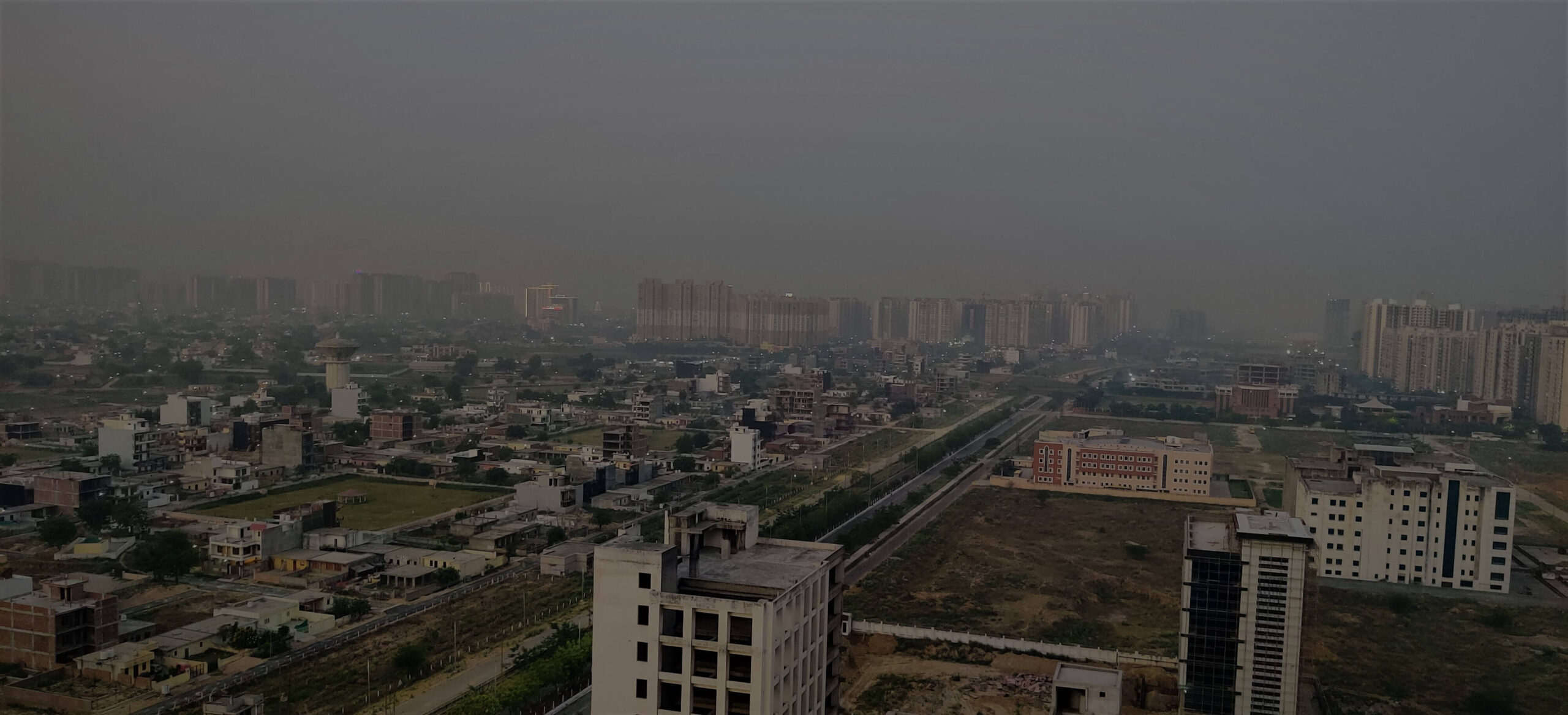




Very informative article and I’m using it for homework. Thank you!
a very well written article.